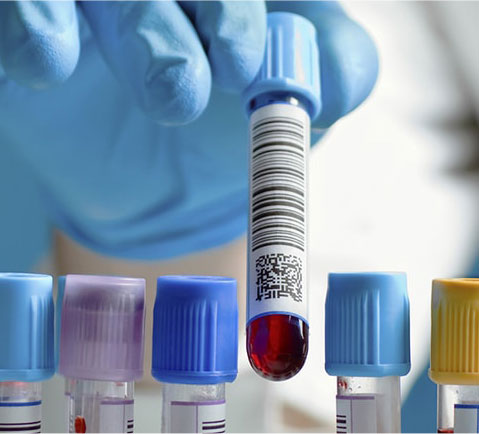Scientists who specialize in allergic diseases and in the development of analytical methods, and instrumentation design to detect airborne allergen-antigen/antibody systems.

The general principles of industrial hygiene apply in all respects to occupational allergens, just as they do for any airborne toxic agent.
Differences in application of these general principles to occupational asthma arise from the requirement for specialized sampling and assay techniques and from the fact that only some workers are affected by the illness. Workers unfortunate enough to develop lung hypersensitivity to airborne antigens become ill upon exposure to very small concentrations of the agent, concentrations that have no effect on other workers. The methods of identifying the offending agents and the individual patients affected by occupational asth
Identification of an occupation as being the source of occupational asthma has historically started with workers' or physicians' suspicions that asthma symptoms are temporally related to some occupation that uses a material that is a known or possible allergen. This suspicion is usually followed up by an epidemiologic survey of the workers that includes symptom diaries, spirometry, serial peak flow measurements, and skin or RAST tests for IgE antibody to the allergen. For investigation of individual cases, inhalation challenge tests are often added to confirm that the material that evoked IgE antibody to the allergen. For investigation of individual cases, inhalation challenge tests are often added to confirm that the material that evoked IgE antibody actually can cause an asthmatic response. A valuable additional, but often unused, link in the chain of evidence that a suspected allergen is the cause of occupational asthma is measurement of the allergen in the air at the worksite. Knowledge of the concentration encountered at work also allows correlation of the response of the worker to the inhalational challenge test in the laboratory to the exposure at work.
After changes to reduce the exposure have been made, a schedule of periodic air sampling is desirable to assure that the changes have been successful in achieving the goals. When the control strategy depends upon scheduled house-keeping, cleaning, or equipment maintenance, periodic monitoring is useful to assure that the program has not lapsed.
| ANTIBODY SOURCE/TYPE | ALLERGEN DESCRIPTION | SPECIFICITY |
| MOUSE/MONOCLONAL | ||
| DUST MITE: | ||
| Dermatophagoides farinae | ||
| GROUP I | SPECIFIC | |
| GROUP II | CROSS REACTIVE | |
| D. pteronyssinus | ||
| GROUP I | SPECIFIC | |
| GROUP II | CROSS REACTIVE | |
| Blomia tropicalis | SPECIFIC | |
| CAT: Fel d1 | SPECIFIC | |
| COCKROACH: | ||
| GERMAN/AMERICAN (Bla qI) | CROSS REACTIVE | |
| GERMAN (Bla qII) | SPECIFIC | |
| RAGWEED: | ||
| SHORT, GIANT, WESTERN | CROSS REACTIVE | |
| RABBIT/POLYCLONAL | ||
| ENZYMES: | ||
| PAPAIN | SPECIFIC | |
| SUBTILISNS | VARIOUS | |
| MISCELLANEOUS: | ||
| DOG | SPECIFIC | |
| CAT | SPECIFIC | |
| GRASSES | CROSS REACTIVE | |
| TREES | SPECIFIC | |
| ASPERGILLUS | SPECIFIC | |
| BASIDIOMYCETES | VARIOUS | |
| BASIDIOMYCETES | VARIOUS | |
| ALTERNARIA (MOLDS) | CROSS REACTIVE | |
| RAGWEED | CROSS REACTIVE | |
| INSECTS (MOTH) | CROSS REACTIVE | |
| HUMAN/IgE | ||
| RODENTS: | ||
| RAT | SPECIFIC | |
| MOUSE | SPECIFIC | |
| GUINEA PIG | SPECIFIC | |
| ENZYMES: | ||
| FICIN | SPECIFIC | |
| SUBTILISNS | VARIOUS | |
| MISCELLANEOUS: | ||
| INSECTS | CROSS REACTIVE | |
| MITES (SEVERAL SPECIES) | VARIOUS | |
| DOG | SPECIFIC | |
| CAT | SPECIFIC | |
| LATEX (NATURAL RUBBER) | SPECIFIC | |
| GRASSES | CROSS REACTIVE | |
| ASPERGUILLUS | SPECIFIC | |
| RAGWEED | SPECIFIC | |
| ALTERNARIA (MOLDS) | CROSS REACTIVE | |
| LOW MOLECULAR WEIGHT: | ||
| SOYBEAN | SPECIFIC | |
| TREES | VARIOUS | |
| HUMAN/IgG | ||
| BIRDS (ALL SPECIES) | SPECIFIC | |
| HUMIDIFIER | SPECIFIC | |
| ASPERGILLUS | SPECIFIC | |
| ALMOND | SPECIFIC | |
| alpha-AMYLASE | SPECIFIC | |
| WHEAT GLUTEN | SPECIFIC | |
|
|
||